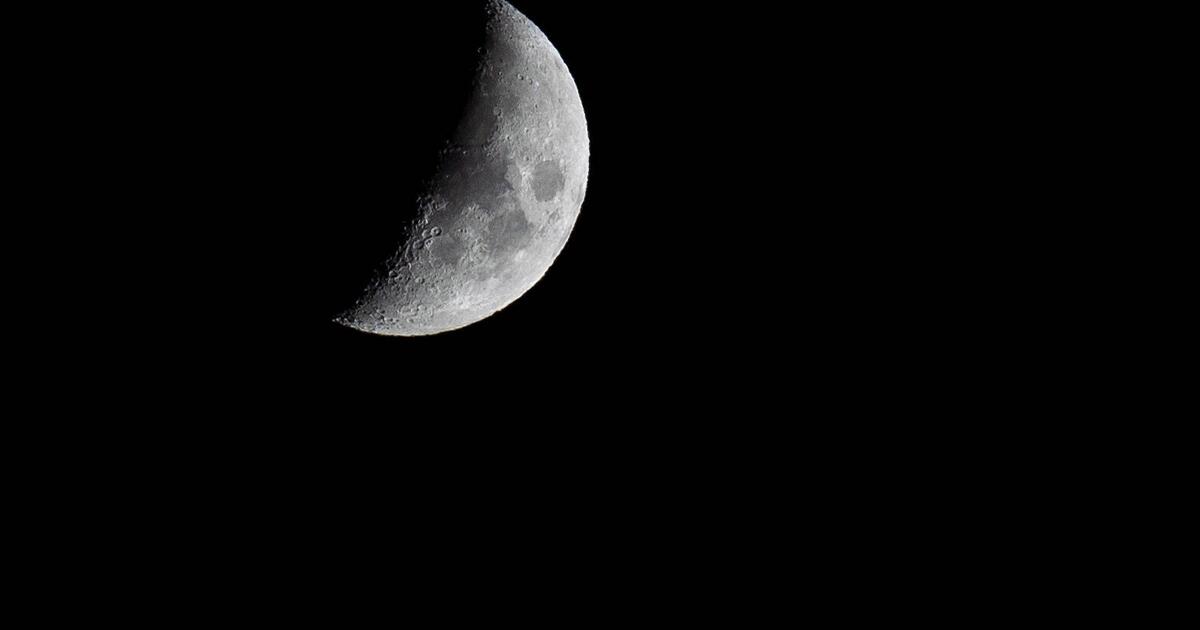Updated 11/11/2021 5:06 PM
- The Earth does not only have the Moon as a companion.
- Smaller rocks, such as the object called Kamo’oalewa, move around the Sun in its vicinity.
- Researchers now have a theory about their origins.
A celestial body 45 to 60 meters high and always near the Earth could be a piece of debris from the Moon – ejected into space when an asteroid hit. This is the conclusion reached by an American research team that has been monitoring the so-called quasi-satellite for several years.
In particular, the color of the body shows no resemblance to asteroids, but to lunar rocks that Apollo astronauts brought to Earth, scientists explain in the journal Communications Earth & Environment.
There are five small objects constantly near the Earth
Since 2004, astronomers have discovered a total of five small celestial bodies that are constantly close to Earth, but orbit the Sun independently. Astronomers refer to these celestial bodies as semi-satellites. Their orbit is monitored from Earth, and it looks as if they are orbiting our planet – the opposite of the usual direction of motion.
“Not much is known about these satellites yet, because they are very weak and difficult to observe,” wrote scientists working with Benjamin Sharkey of the Lunar and Planetary Laboratory in Tucson, Arizona.
For several years, the team took a closer look at the Kamo’oalewa quasi-satellite, which was discovered in 2016 — the name comes from a Hawaiian creation myth and means “descendent traveling alone” — using the Hawaiian big-eyed telescope. A challenging task, as the small orb can only be observed for a short time in April due to its orbit.
To their surprise, Sharkey and his colleagues discovered that Kamaloa’s spectrum is unlike any other known asteroid in near-Earth orbits. The researchers found only a match in comparison with silicate rocks taken from the moon. In addition, a careful analysis of Kamo’oalewa’s orbit also indicates that the small piece originally comes from the Earth-Moon system. “The orbit is atypical for near-Earth asteroids, and it is very unlikely that a normal near-Earth asteroid would enter such an orbit,” explains Sharkey’s colleague Renu Malhotra.
Kamo’oalewa could be debris from the moon
So the researchers think the most likely explanation is that Kamo’oalewa – and possibly other semi-satellite satellites as well – is a piece of debris thrown by an asteroid impact on the Moon. Another evidence supports this hypothesis: near Earth, Kamo’oalewa moves only at a speed of 2 to 5 kilometers per second – asteroids in near-Earth orbits usually move across our planet at a speed of about 20 kilometers per hour.
However, the researchers cannot determine when the impact that would have been Kamaloa occurred – only that the object can remain stable near Earth for several million years, but not for billions of years. (dpa/Reiner Kaiser/mg b)

“Prone to fits of apathy. Zombie ninja. Entrepreneur. Organizer. Evil travel aficionado. Coffee practitioner. Beer lover.”







More Stories
Raspberry Pi5 as desktop replacement after 5 months
Windows 11: Update brings ads in start menu
Voyager 1 is once again sending data from deep space